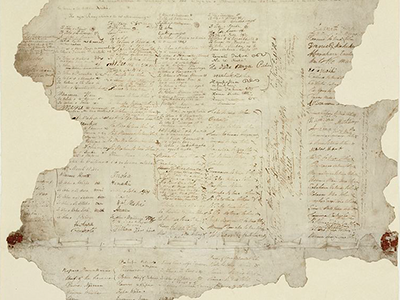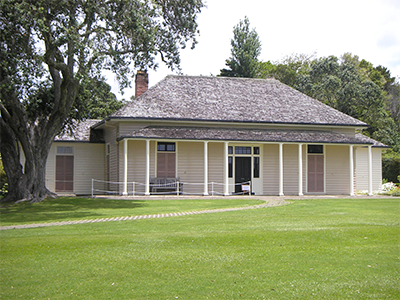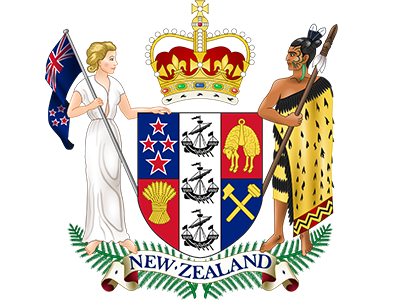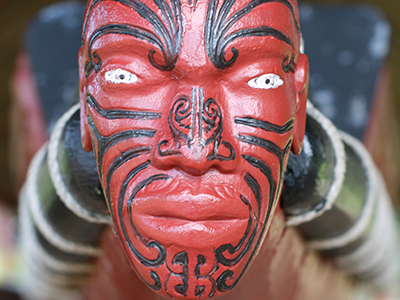1. Signing
The Treaty of Waitangi was signed on the grounds of James Busby’s house (now known as ‘Treaty House’), located in Northland’s Bay of Islands. The house was gifted to the nation in 1932 by Lord and Lady Bledisloe. The original treaty was signed by representatives of the British crown and prominent Māori chiefs from the northern regions of the North Island. Once signed on the Waitangi Treaty Grounds, the Treaty made its way around the country to be signed by chiefs from other tribes. The Treaty was written by William Hobson (representative of the British) and his secretary James Freeman. Busby, the ‘British Resident’ in NZ, added his own notes and tidied them up. The Treaty was then translated into te reo Māori by missionary Henry Williams and his son Edward. It is important to note that not all chiefs signed the Treaty, despite more than 40 signing it at Waitangi and 500 signing overall. Most of the chiefs who did sign signed the te reo Māori version, but there were different interpretations for each due to the difference in meaning of the Māori language and English language. Once the treaty was signed, New Zealand transitioned from an independent country to a British colony.
2. Cultural Significance of Waitangi
As well as James Busby’s house, the Waitangi Treaty Grounds feature other prominent cultural icons. The grounds are the home of the Museum of Waitangi (opened 2016), and its permanent exhibition ‘Ko Waitangi Tēnei - This is Waitangi’, which details the complete history of the Treaty and how it has shaped NZ and the relationship between the British and Māori over 170 years. On the grounds you can also visit ‘Te Whare Runanga’ (a carved Māori meeting house, that was erected close to James Busby’s house, in 1940, to commemorate the centernary of the first signing of the Treaty of Waitangi). This was built under close supervision by former Minsiter for Māori development Āpirana Ngata, who saw it as a symbol of the two treaty partners standing togethger. Ngatokimatawhaorua, a 35.7 metre long Māori waka also sits on the grounds. It was built in 1940 and named after the waka that Hawaiki (Tahiti) chief Kupe discovered New Zealand in. The canoe was refirbushed and launched as part of the 2010 Waitangi Day celebrations, and can fit up to 80 paddlers and 50 passengers.
3. History
When the Treaty was signed, relations between indigenous Māori and the European settlers representing the crown was difficult. Each culture had their own belief systems, with each system foreign to the other. The crown believed that a government was crucial to manage a country and its people. The Māori people lived in tribes, each with their own set laws/rules and goverened by a rangatira (chief) whose authority was limited to his tribe and no others. The Māori people didn’t know how a central Government operated. Due to language barriers, the Treaty was translated from English to Māori and there is still debate as to how the versions hold up against each other. Waitangi Day has often been a tumultous time, as issues with the original Treaty and partnership between Māori and Pākehā (a white/non- Māori New Zealander) are fiercely debated. In recent years however, most of the unrest has been replaced by a drive towards a proper partnership, as the Waitangi Tribunal and Government are ensuring that grievances caused by the Crown are settled and land is returned/reparation is given.
4. Public holiday
Most NZ workers, schoolchildren and University students get the day off on Waitangi Day. Waitangi Day as we know it hasn’t always been partnered with a day-off. In 1957 the Labour Party promised the 6th of February would be declared a public holiday as a way of remembering the historical significance of the Treaty of Waitangi. Labour won the 1957 election, but when the Waitangi Day Act 1960 was introduced, no public holiday was introduced, the day was instead listed as 'as a national day of thanksgiving in commemoration of the signing of the Treaty of Waitangi'. As calls for the day to become a national holiday increased throughout the late 1960’s and into the 1970’s, Labour Party leader and Prime Minister Norman Kirk agreed to make the day a national holiday in 1974 but changing the name to New Zealand Day. In 1976 when the National government had taken office, the Waitangi Day Act of 1976 reinstated the name Waitangi Day and the event continued to be a public holiday.
5. Activities
Commemorations happen across the country, with hui’s (meetings), events, debates, whānau (family) gatherings, kai (food), festivals/concerts and parties taking place in the North and South Island. There is a large mixture of formal and informal gatherings, with the largest formal event taking place at the Waitangi Treaty Grounds and often attended by the Prime Minister.
Waitangi Day is also celebrated internationally, with concerts in London and other less formal activities organised by Kiwi expatriates in Australia and beyond.
Who are iStudent Complaints and what can we help you with?
iStudent Complaints is an independent dispute resolution scheme established by the New Zealand Government. Our objective is to encourage swift settlement of contractual and financial disputes between international students and their providers in New Zealand.
As an independent and impartial service, we are not affiliated with any Education providers.
Why did we do this blog?
Even if we need to step in one day to help you resolve a dispute, we want you to enjoy studying and living in our amazing country as much as we do. To that end, we’ve created this content so that you may continue to explore and experience the best New Zealand can offer.




